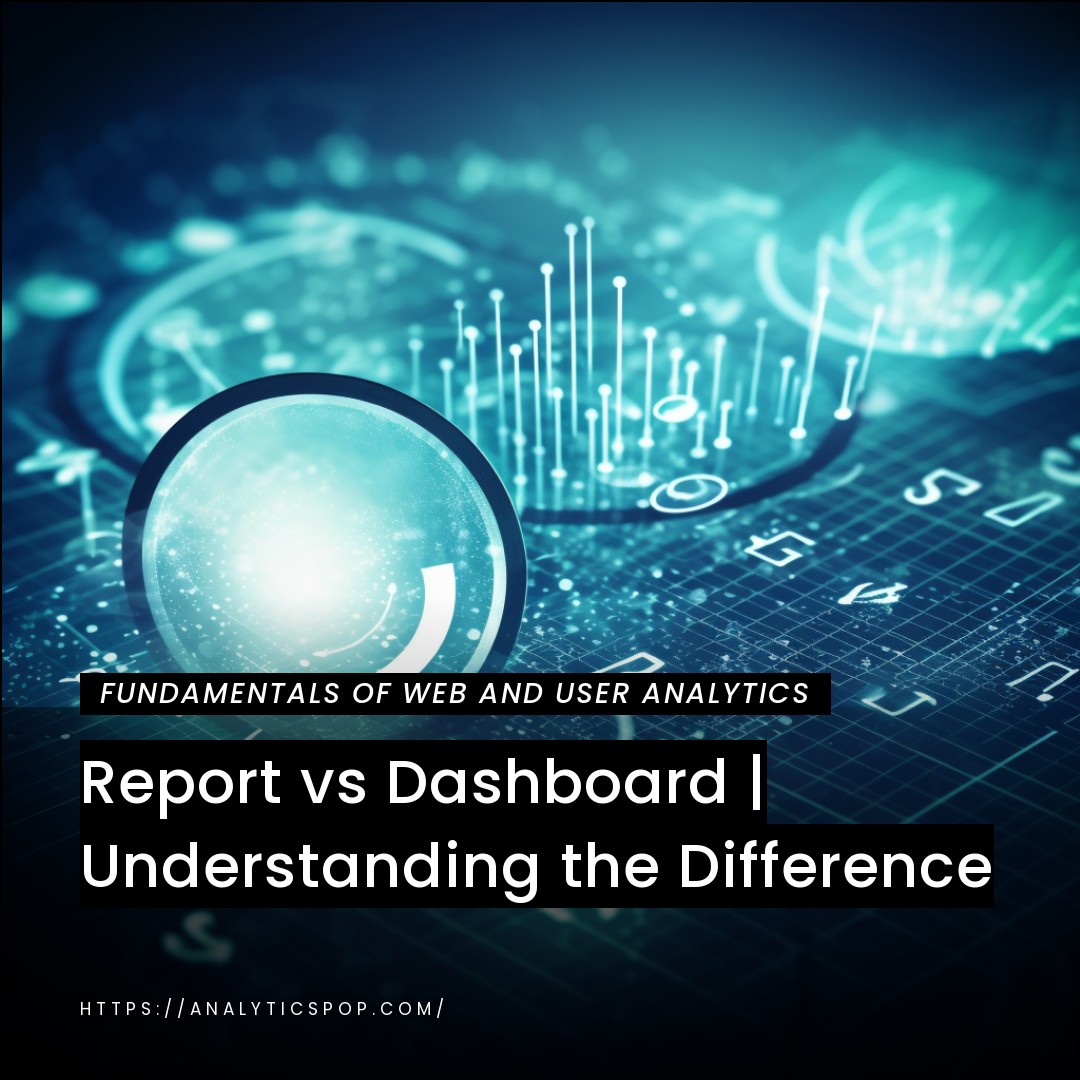Web analytics is a critical component of any online business strategy. It helps you understand how your website is performing, who your audience is, and what they are doing on your website. To ensure that your web analytics implementation is expertly done, there are a few key considerations to remember.
- Firstly, ensure you use the right web analytics tool for your business needs. Google Analytics is a popular option that offers a wide range of features and is free to use. However, other options are available such as Adobe Analytics, a more advanced tool that offers additional functionality.
- Secondly, ensure that your web analytics tracking code is installed correctly on your website. This code allows the analytics tool to collect data on user behavior on your website. A misconfigured tracking code can lead to accurate and complete data.
- Lastly, take the time to set up your web analytics tool correctly. This includes creating goals, setting up funnels, and configuring filters to ensure that you collect and analyze the data most relevant to your business.
By following these best practices, you can ensure that your web analytics implementation is expertly done, allowing you to make data-driven decisions that can improve the performance of your website and drive business growth.
Importance of expert web analytics implementation
Expert web analytics implementation is crucial for the success of any online business. By analyzing user behavior on your website, you can gain valuable insights into what is working and what needs improvement. This data can help you make informed decisions about website design, content strategy, and marketing campaigns.
Web analytics lets you track key performance indicators (KPIs) such as website traffic, user engagement, and conversion rates. By monitoring these metrics, you can identify trends and patterns that can inform your business strategy.
Expert web analytics implementation also enables you to optimize your website for search engines. By analyzing user search queries and behavior, you can identify keywords and topics relevant to your audience and create content optimized for search engine rankings.
In addition, web analytics can help you measure the ROI of your marketing campaigns. You can determine the most effective campaigns by tracking conversions and revenue and allocating your marketing budget accordingly.
Expert web analytics implementation is essential for any business that wants to stay competitive in the online marketplace. It provides valuable data-driven insights to inform your business strategy and drive growth.

Business Goals and KPIs
Defining business goals and key performance indicators (KPIs) is essential for successful web analytics implementation. Your business goals should be specific, measurable, achievable, relevant, and time-bound (SMART). Once you have defined your business goals, you can identify the KPIs to help you measure progress.
For example, if your business aims to increase website traffic, your KPIs include website visits, page views, and bounce rate. If your goal is to improve user engagement, your KPIs might include time on site, pages per session, and click-through rate.
It’s essential to ensure that your KPIs are aligned with your business goals and are meaningful and actionable. By tracking and analyzing your KPIs, you can identify trends and patterns, make data-driven decisions, and continuously improve your website and business strategy.
In addition to setting business goals and KPIs, reviewing and updating them as your business evolves regularly is essential.
Doing so ensures that your web analytics implementation remains relevant and aligned with your business objectives.
Tracking Code
Tracking code is a crucial component of web analytics implementation, enabling you to collect data on user behavior on your website. The tracking code is typically a small piece of JavaScript code that is inserted into the HTML of your website pages.
To ensure that your tracking code is expertly implemented, there are a few key considerations to remember.
- First, ensure the tracking code is installed on every website page. This ensures you capture data on all user interactions, not just a select few.
- Secondly, ensure that the tracking code is correctly configured to capture the most relevant data to your business goals. This might include tracking pageviews, events, conversions, or other user interactions.
- It’s also important to regularly test your tracking code to ensure it functions correctly. This might include testing the code on different devices and browsers and checking that it captures the expected data.
- Lastly, ensure that your tracking code is set up to comply with data privacy regulations such as GDPR and CCPA. This might include obtaining user consent for data collection and anonymizing IP addresses to protect user privacy.
By following these best practices, you can ensure that your tracking code is expertly implemented, enabling you to collect and analyze valuable data on user behavior on your website.
Data Collection
Collecting accurate and comprehensive data is essential for effective web analytics. To ensure that your data collection is expertly done, there are a few key considerations to remember.
- Firstly, ensure you are collecting the correct data for your business goals. This might include tracking user behavior on specific pages of your website, measuring the effectiveness of marketing campaigns, or monitoring the performance of particular products or services.
- Secondly, ensure that your data collection is consistent and reliable. This might involve setting up standardized naming conventions for your website pages and events and regularly reviewing your data to identify anomalies or discrepancies.
- It’s also essential to ensure that your data collection is accurate and not impacted by factors such as ad blockers or bots. This might involve other tracking technologies, such as server-side tracking, which can help ensure your data is more accurate and comprehensive.
- Lastly, ensure your data collection complies with privacy regulations such as GDPR and CCPA. This might include obtaining user consent for data collection, anonymizing personally identifiable information, and implementing appropriate security measures to protect user data.
By following these best practices, you can ensure that your data collection is expertly done, enabling you to collect accurate and comprehensive data that can inform your business strategy and drive growth.
Tag Management
Tag management is a critical component of web analytics implementation, as it enables you to manage and deploy tracking tags across your website without manual coding. This can help save time and reduce the risk of errors or inconsistencies in your tracking.
To ensure that your tag management is expertly done, there are a few key considerations to remember.
- Firstly, use a reliable and robust tag management system such as Google Tag Manager or Adobe Tag Manager.
- Secondly, ensure your tag management system is correctly configured to track the data most relevant to your business goals. This might include setting up tracking tags for website traffic, user behavior, or marketing campaigns.
- It’s also important to regularly review and test your tag management system to ensure it functions correctly. This might include testing tags on different pages of your website, checking that they are firing correctly, and monitoring data to ensure that it is accurate and consistent.
- Lastly, ensure your tag management system complies with data privacy regulations such as GDPR and CCPA. This might include obtaining user consent for data collection and ensuring that tags only fire on pages where permission has been received.
By following these best practices, you can ensure that your tag management is expertly done, enabling you to deploy tracking tags across your website efficiently and accurately. This can help you collect valuable data to inform your business strategy and drive growth.

Reporting and Analysis
Reporting and analysis are essential components of web analytics implementation, as they enable you to turn raw data into actionable insights that can inform your business strategy. To ensure that your reporting and analysis are expertly done, there are a few key considerations to remember.
- Firstly, ensure you use the right analytics tool for your business needs. This might include tools such as Google Analytics or Adobe Analytics, which offer a range of features and functionality to help you analyze your data effectively.
- Secondly, ensure that your reporting and analysis are aligned with your business goals and KPIs. This might involve setting up custom reports and dashboards to track specific metrics or events most relevant to your business.
- Ensuring that your reporting and analysis are consistent and reliable is also essential. This might involve standardizing your naming conventions for website pages and events and regularly reviewing your data to identify anomalies or discrepancies.
- Lastly, ensure that your reporting and analysis are actionable and insightful. This might involve using data visualization tools to present your data clearly and meaningfully and using statistical techniques such as A/B testing or regression analysis to identify trends and patterns in your data.
By following these best practices, you can ensure that your reporting and analysis are expertly done, enabling you to turn raw data into actionable insights that can inform your business strategy and drive growth.
Action Plan
Developing an action plan is a critical component of web analytics implementation, as it enables you to translate insights from your data into actionable steps that can drive business growth. To ensure that your action plan is expertly done, there are a few key considerations to remember.
- Firstly, ensure that your action plan is aligned with your business goals and KPIs. This might involve identifying specific actions that can help you achieve your goals, such as optimizing your website for search engines, improving user engagement, or increasing conversions.
- Secondly, ensure that your action plan is based on data-driven insights from your web analytics. This might involve using statistical techniques such as regression analysis to identify the factors most strongly correlated with your business goals and KPIs.
- It’s also essential to ensure that your action plan is feasible and achievable, given your available resources and timeline. This might involve prioritizing actions based on their potential impact and the resources required to implement them.
- Lastly, ensure your action plan is regularly reviewed and updated based on your progress and evolving business needs. This can help ensure that your web analytics implementation remains aligned with your business objectives and continues to drive growth over time.
By following these best practices, you can ensure that your action plan is expertly done, enabling you to translate insights from your web analytics into actionable steps that can help drive business growth.
FAQs
How long does expert web analytics implementation take?
The time it takes to implement expert web analytics depends on various factors, such as the size and complexity of your website, the goals and KPIs you want to track, and the analytics tool you are using.
Generally, a basic implementation of Google Analytics can be completed in a few hours, while more complex deployments with custom tracking and reporting can take several weeks or even months. The time will also depend on the in-house resources and expertise versus outsourcing the implementation to a third-party expert.
Regardless of the timeline, it’s essential to take the time to ensure that your web analytics implementation is expertly done, as it can have a significant impact on the effectiveness of your online business strategy. This includes selecting the right analytics tool, correctly configuring your tracking code, and setting up goals and KPIs aligned with your business objectives.

Can expert web analytics implementation help improve website performance?
Expert web analytics implementation can help improve website performance by providing valuable data-driven insights into user behavior and website performance. By analyzing this data, you can identify areas for improvement and make informed decisions about website design, content, and marketing campaigns.
For example, web analytics can help you identify pages on your website with a high bounce rate or low engagement, which can indicate design, content, or user experience issues. Optimizing these pages can improve user engagement and reduce bounce rates, which can help improve website performance.
Web analytics can also help you track the effectiveness of your marketing campaigns, enabling you to identify campaigns that are driving traffic and conversions and those that are not. Optimizing your marketing campaigns based on this data can increase ROI and drive business growth.
Expert web analytics implementation can help you identify areas for improvement on your website, optimize your marketing efforts, and make data-driven decisions that can improve website performance and drive business growth.
How often should I review my web analytics implementation?
It’s essential to regularly review your web analytics implementation to ensure it functions correctly and provides accurate and meaningful data. The frequency of these reviews will depend on the size and complexity of your website, the volume of data you are collecting, and the frequency of changes to your website or business strategy.
Generally, reviewing your web analytics implementation at least once per quarter or whenever there are significant changes to your website or business goals is recommended.
This review should include checking that your tracking code is functioning correctly, reviewing your data to identify any anomalies or discrepancies, and ensuring that your reports and analysis are aligned with your business goals and KPIs.
It’s also important to regularly update and optimize your web analytics implementation based on your business needs and the insights you gain from your data. This might involve setting new goals and KPIs, testing new tracking technologies, or optimizing your reporting and analysis to align with your business objectives.
Regularly reviewing and updating your web analytics implementation ensures it remains relevant and practical, providing valuable data-driven insights that can inform your business strategy and drive growth.



